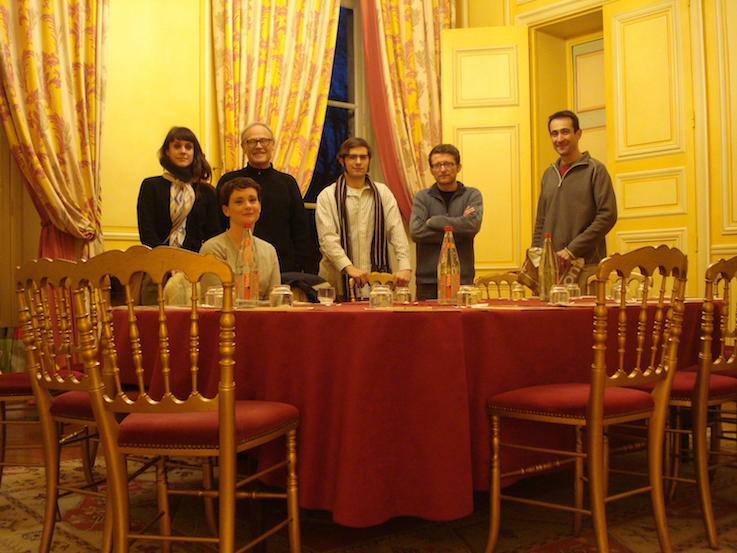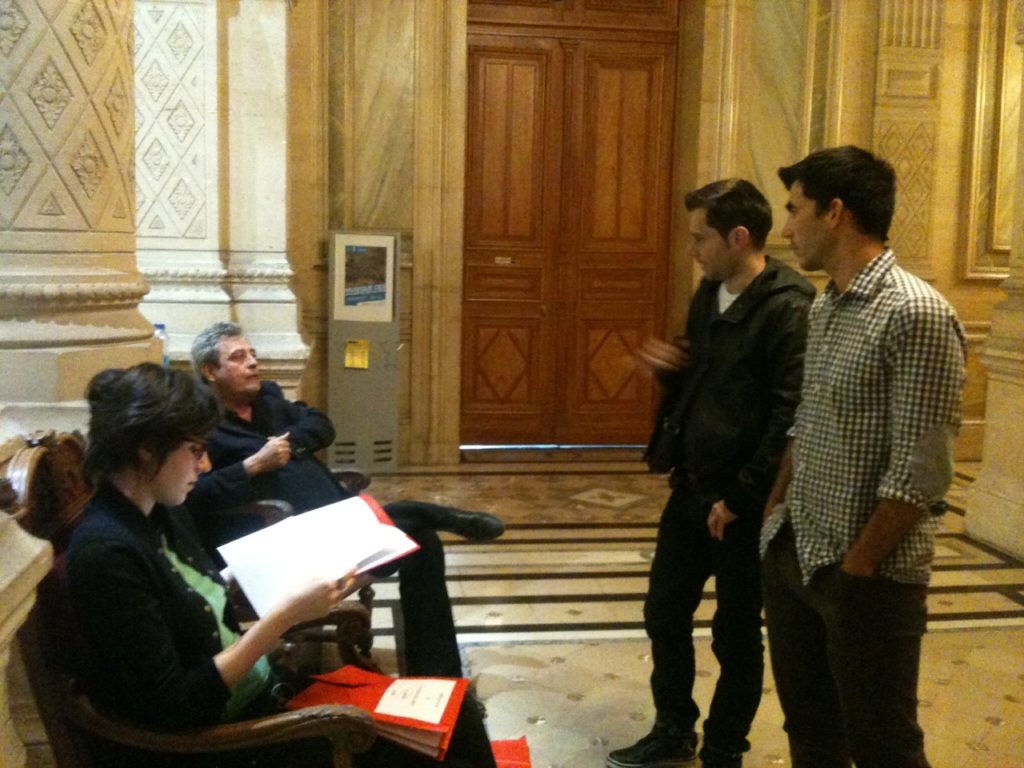The National School of Art (ENDA) is the extended result of several years of research. What began as a collegial experiment is now unfolding on a national scale. The events that led the Biennale de Paris to create, capture and monopolize the respective forms of college, institute and school, mark not only steps in the realization of its pedagogical research, but more broadly a sensitivity to change, continually redrawing its contours and methods.
2008
Paris Biennale College
From the beginnings of the College, certain elements of the ENDA project were already present. Its mobility, as an entity that takes place without having one, made it possible to construct a horizontal organisation; yet the status of professors and students was still undermined by the format and orality of the exchanges. The college then consisted of “a collegial moment without students, without teachers, without a roof, without a curriculum, at odds with all the notions that constitute art and its teaching”. The initiative was accompanied by “usages likely to wrench art from itself”. The two-year existence of the Collège de la Biennale de Paris, around Ghislain Mollet-Viéville, Alexandre Gurita, Steven Wright, François Deck, Liliane Viala, Sylvain Soussan, Paul Robert, Karine Lebrun, Claire Dehove, Pierre Monjaret, Alain Farfall and André Éric Létourneau, brought to the fore issues linked to its status as a school and the potential ways in which it could truly come into contact with art and its system.

Musée de la Monnaie, Paris, 22nd of January, 2010.
2012
Institut des hautes etudes en arts plastiques (Iheap)
Using the same modus operandi that brought it back from the ashes in 2000, the Biennale de Paris absorbed and relaunched the Institut des hautes études en arts plastiques (Iheap) which had been abandoned by the City of Paris and liquidated in 1995 after seven years of operation.
This institute was intended to be an alternative to ENSBA (Ecole nationale supérieure des beaux-arts de Paris) and was created on the initiative of the mayor of Paris. In 1985 Jacques Chirac asked Pontus Hulten (also one of the designers of the Centre Pompidou) to create a new kind of school. Pontus Hulten then asked personalities such as Pierre Bourdieu, Sarkis and Daniel Buren to set up this institute, which was intended to be revolutionary at the time. Iheap wanted to be a continuation of Bauhaus and Black Mountain College. The institute initiated what is now called the “post-diploma”.
By reactivating this institute and allowing it to live again in keeping with its history and under new issues, the new Iheap became an educational and economic agent circulating in an art world where few, if any, initiatives allowed current practices to exist, outside the market or the circuit of legitimacy of large institutions.

2015
Iheap New York
Thanks to the commitment of Virginia Cimino and a local team, a program in New York is being opened on the model the Paris program. Entirely in English, the New York institute has invited new speakers, both American and foreign, such as Steven Madoff, Jeff Perkins and Robert Storr. In establishing itself in the United States, it was the first French art school abroad. This short experience allowed exploration of the American context and formulation of the premises for the creation of an ENDA in the United States in a second phase to come. One of the major projects of ENDA in US was the lunch of the first Alternative Art School Fair (AASF), organized on Pioneer Works from 20 to 21 of November 2016.
Pioneer Works, 20-21 of November, 2016. The first fair in the worls dedicated to the innovative education and alternative art school fairs.
2016
The Paris Biennale in Beirut
This year’s session put forward the possibility of organizing a Paris Biennale somewhere in the world as part of its curriculum. The practitioners (at the time they were called “sessionists”) chose Beirut. Thus was born the Paris Bienniale in Beirut, which took place from June 27 to July 3, 2016 in different locales in Beirut in partnership with local institutions such as Shams or the Beirut Art Center. Practitioners were invited to formulate a personal project and a collective group project. Among the projects was a photo exhibition that existed only during its disappearance. At the opening of this exhibition, guests were invited to take photos. After the disappearance of all the photos, half an hour after the opening, the exhibition closed. More details: https://biennaledeparis.org/Liban
2018
Ecole nationale d’art (ENDA)
After six years of existence, the Institute for Advanced Studies in Visual Arts (Iheap) became the National School of Art (ENDA). In becoming nationalized, a new dimension opened up for the educational branch of the Paris Bienniale: reversing the idea that the official is hierarchical.That is to say an inductive and inclusive institution, which is not concerned with what comes from above and which establishes itself on the emergence of attitudes and thoughts that are sometimes marginal. Since 2018 ENDA has been engaged in cooperative programs and partnerships with foreign educational institutions. It formulates a plan of development on a national scale with a program in La Réunion and Lyon, and internationally in India and Latin America.
2020
An European scale partnership
This year ENDA initiated a two-year Europe-wide project, ETI (Experimenting Institutional Transformation). ETI invites artists and non-artists alike to reformulate a set of art institutions. Thanks to the intervention of European citizens and artists associated with four European art institutions, ETI takes up the challenge of imagining a new institution that is sensitive to the diversity of social and artistic practices and opens places of culture to wider audiences. Gathered by ENDA, Idensitat in Barcelona (Spain), Minitremu in Targu-Mures (Romania) and the Bottari Lattes Foundation in Turin (Italy) will welcome artists who will be able to experiment with a new kind of programming with audiences, leading to as many institutional reformulations. ETI will conclude with a forum in Paris. This forum will also be an opportunity to prototype a European consultation body to support art and cultural institutions wishing to work on the transforming their model. The project partners: the French Institute of Barcelona (Spain) and of Cluj-Napoca (Romania), and Alliance Française of Turin (Italy). The ETI project is co-financed by the European Union’s Creative Europe program. More info : http://www.eti-europe.eu

